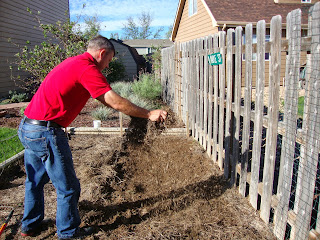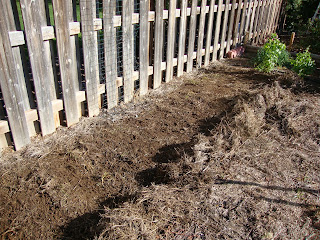Posted by: Alison O’Connor, horticulture agent, Larimer County Extension
As the weather cools, my thoughts turn to comfort food, good books, warm fires…and cover crops? Ok, I never really gave planting a cover crop in my garden a second thought, until my poor veggies were smushed to smithereens in August from hail. With my garden sitting fallow and sad…and the fact that I’ve never tilled, amended or fertilized my garden…I decided to plant a cover crop.
What’s the purpose you ask? Well, the Colorado Master Gardener site has an excellent publication that will answer your questions. But essentially, I did it out of sheer curiosity and to do a good thing for my soil and plants next year (free nitrogen from the legumes!). Lesson learned: planting a cover crop is really easy. Easier than growing tomatoes, that's for sure.
So here’s what I did…enjoy the photographs!
 |
| Step 2. Upon opening your seed packets, promptly spill them on the garage floor. ARRGHHH! (You're impressed that I got a photo of this, aren't you?) |
 |
| Step 3. Mix all the cover crop seed together in a clean container. This is only necessary if you bought your seed separately and not as a "cover crop mix." |
 |
| Step 4. Make sure your beagle is handy to carefully watch and keep you on track. (That's Willow. She's my gardening buddy and has an affinity for tomatoes. ) |
 |
| Step 7. Spread your seed! Toss the seed in an even coat across the soil surface. It's not a science--just make sure you have enough seed for the entire garden area. |
 |
| Step 8. Using a steel-tine rake, gently spread the seed evenly across the soil surface. This also helps ensure soil-seed contact which will help with germination. |
 |
| Step 9. Back to the cover crop! I then re-spread my straw over the top of the seed to help with moisture retention. If you don't have straw, leaves or grass clippings, Step 8 will be even more important to ensure good soil-seed contact. |
 |
| Step 11. Success! Nine days later, the cover crop has germinated and is starting to fill in. I'll leave it until next spring when I'll till it into the soil as a green manure. |
 |
| Wait 'til next year, Willow! We'll have the best tomatoes ever! |




